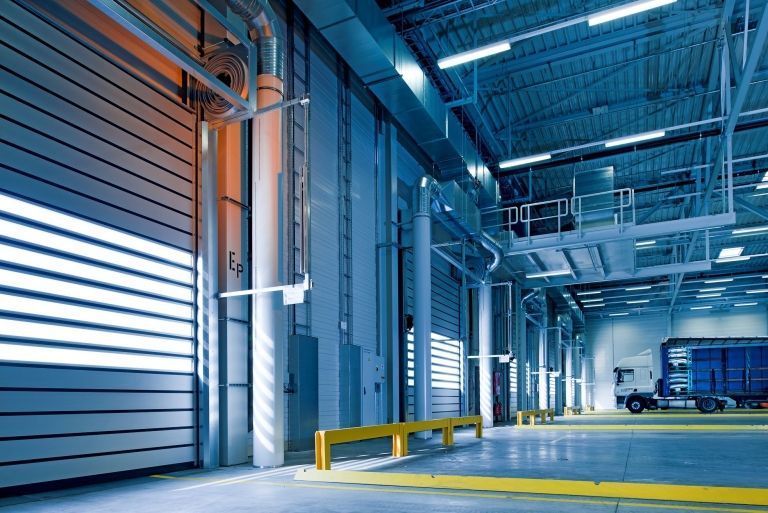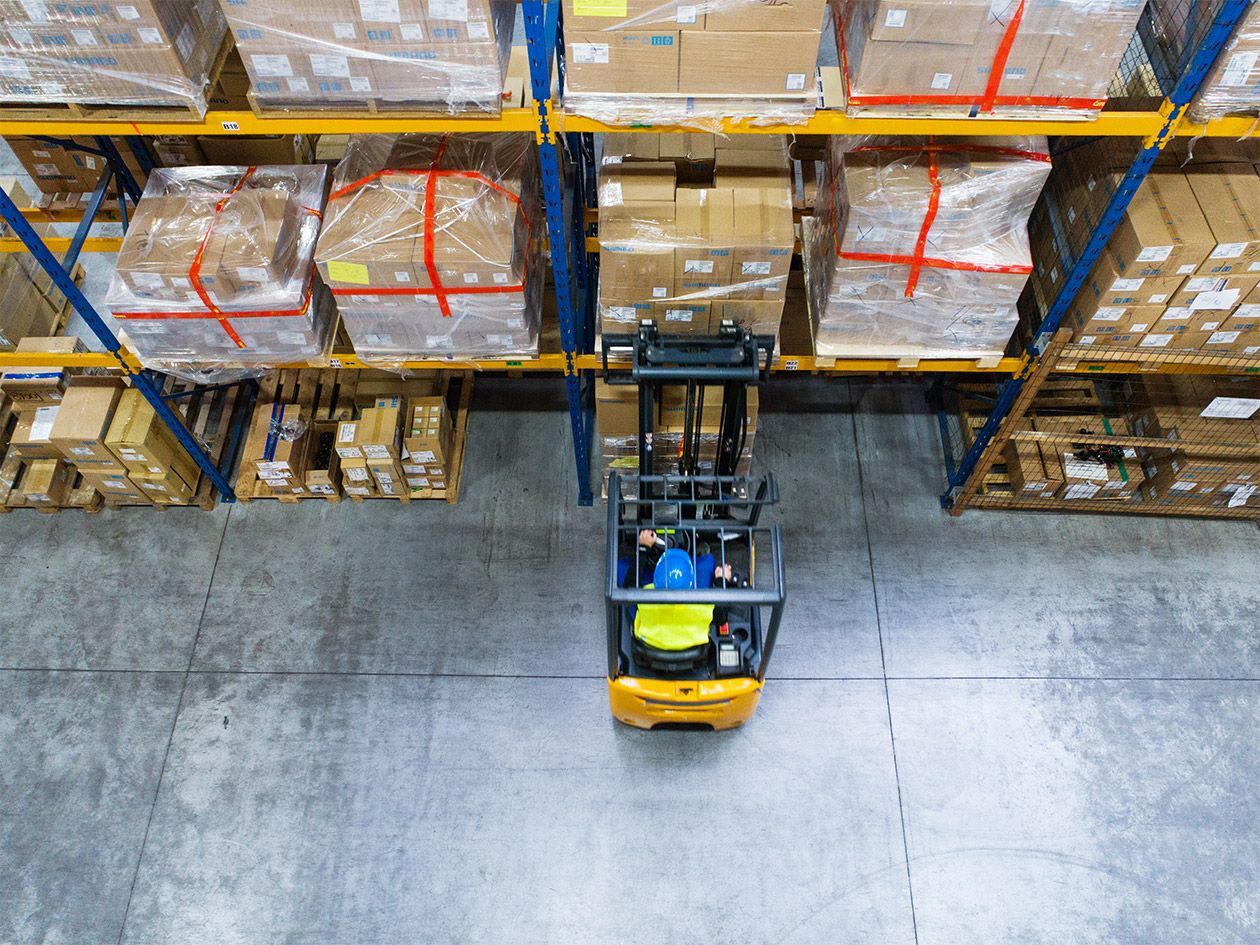8 Updates to Improve Your Warehouse Operations
Warehouse operations are critical to the success of businesses in various industries, and warehouse owners and managers are always looking for ways to improve efficiency, safety, and productivity.
Explore some essential updates to help you achieve these goals, from electric forklifts to proper ventilation systems.
Electric Forklifts: Greener and Efficient Operations
Electric forklifts have become an increasingly popular choice for modern warehouses due to their eco-friendliness and operational efficiency. Unlike traditional gas-powered forklifts, electric forklifts produce zero emissions, which helps reduce your warehouse's carbon footprint and improves indoor air quality for workers.
In addition to being environmentally friendly, electric forklifts have lower operational costs. They require less maintenance because they have fewer moving parts than internal combustion models. With electric forklifts, your warehouse can reduce fuel costs and reliance on fossil fuels. Additionally, modern electric forklifts offer excellent performance, are quieter, and can be customized with features like longer-lasting batteries to maximize uptime.
Key Benefits:
- Reduced emissions and energy costs
- Quieter operation
- Lower maintenance requirements
Inventory Management Automation: Efficiency at Scale
Automating inventory management is one of the most significant changes that can streamline warehouse operations and reduce manual errors. Automated systems allow for real-time tracking of products, provide insights into inventory levels, and reduce the risk of stockouts or overstocking.
Automation technologies such as barcode scanning, RFID (Radio Frequency Identification), and IoT (Internet of Things) enable accurate and fast data collection. These systems can integrate with other platforms, like enterprise resource planning (ERP) systems, to streamline operations and ensure the right products are always available. Automated inventory systems also allow for better decision-making, improved forecasting, and reduced labor costs by minimizing human intervention.
Key Benefits:
- Enhanced accuracy and tracking
- Improved forecasting and decision-making
- Reduced labor costs

Cloud-Based Inventory Systems: Accessibility and Flexibility
Moving your inventory management to a cloud-based system adds a layer of flexibility and scalability to your operations. Cloud systems allow warehouse managers and staff to access inventory data anywhere, anytime, without being tied to a single location or server.
With cloud-based inventory systems, data continuously updates, ensuring real-time accuracy; this can be especially valuable for warehouses operating multiple locations or servicing e-commerce platforms where demand fluctuates rapidly. Cloud-based solutions are also cost-effective because they typically require lower upfront investments and provide ongoing software updates, eliminating the need for costly infrastructure upgrades.
Key Benefits:
- Access inventory data from anywhere
- Scalability and flexibility
- Reduced infrastructure costs
Sanitation Stations: Promoting Health and Safety
Post-pandemic, sanitation has become a top priority in warehouses, not only for compliance but for maintaining employee health. Sanitation stations throughout the warehouse offer employees convenient access to hand sanitizers, disinfectant wipes, and other cleaning products.
Installing multiple stations, particularly at entry and exit points and high-traffic areas, can create a cleaner, safer environment. These stations also promote a culture of cleanliness, reducing the risk of contamination and illness that could affect the workforce.
Key Benefits:
- Improved employee health and safety
- Cleaner work environment
- Enhanced compliance with health standards
New or Optimized Racking: Maximize Space and Efficiency
The layout of your racking system directly affects how efficiently products are stored, retrieved, and handled. Investing in new or optimized racking solutions can maximize the use of vertical space while improving access to products.
Selective racking, drive-in/drive-out systems, or push-back racking are options based on your inventory needs. Optimized racking systems can enhance the flow of products in and out of the warehouse, reduce picking times, and increase overall storage capacity. Additionally, well-planned racking minimizes the risk of damage to goods and reduces forklift travel time.
Key Benefits:
- Increased storage capacity
- Faster product retrieval
- Reduced product damage
Training Procedures: Investing in Your Workforce
Your warehouse is only as efficient as the people who run it. Regularly updating and refining training procedures ensures that your staff operates equipment properly, adheres to safety protocols, and maximizes productivity.
New technology, updated procedures, and revised safety protocols require consistent, hands-on training to prevent mistakes and accidents. Training also empowers employees to make better decisions in real time, and cross-training workers for multiple roles can make your warehouse more agile in handling workflow changes.
Key Benefits:
- Improved employee productivity
- Enhanced safety and reduced accidents
- Increased flexibility and adaptability
Hydration Stations: Supporting Worker Well-Being
Staying hydrated is crucial for warehouse employees, particularly when they are on their feet for extended periods or working in high-temperature conditions. Hydration stations throughout the warehouse can encourage employees to take breaks and stay hydrated, preventing fatigue, improving focus, and enhancing overall productivity.
By making hydration stations easily accessible, you also demonstrate that you care about employee well-being, which can boost morale and reduce turnover.
Key Benefits:
- Prevents dehydration and fatigue
- Boosts employee morale
- Enhances focus and productivity

Proper Ventilation with Fans: Enhancing Airflow and Comfort
Warehouse environments, particularly those with machinery and high activity levels, can become hot and stuffy. Installing proper ventilation systems, including industrial fans, is essential for air quality and comfort.
Good ventilation prevents heat buildup and ensures fresh air circulation, which can help reduce the concentration of dust, fumes, or harmful particles. A comfortable working environment can improve worker satisfaction and reduce the likelihood of heat-related illnesses.
Key Benefits:
- Improved air quality and circulation
- Enhanced employee comfort and health
- Reduced risk of heat-related incidents
Work With Benco Industrial Equipment
Our Benco Industrial Equipment team offers personalized assistance and consultation to help you find the best solutions for your warehouse needs. Contact us today to explore our range of industrial equipment and services and take the first step toward improving your warehouse operations.




